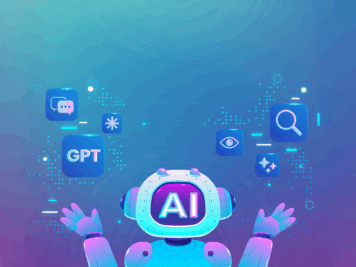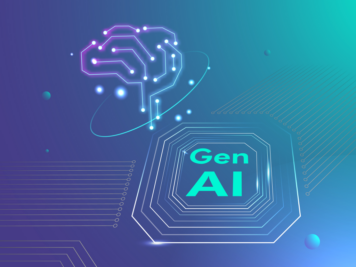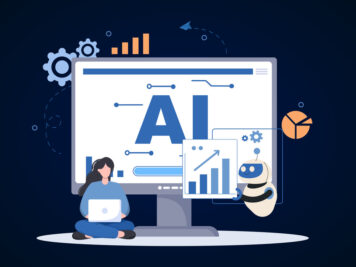Agentic AI is everywhere in the headlines — autonomous agents that plan, reason, take action, and optimize on the fly. And the C-suite is betting big.
A recent PwC AI Agent survey of 300 senior U.S. executives found:
- 88% plan to increase their AI budgets in the next 12 months
- 79% have already adopted AI agents into their operations
- 66% report real productivity gains from those deployments
Sounds promising, right? Now for the reality check:
- Only 35% of companies have implemented agentic AI at scale
- Just 17% have successfully integrated agents across core workflows
So, what’s holding everyone else back? It’s not the tech. It’s execution.
Implementing agentic AI isn’t about plugging in a new tool. It’s about redesigning how your business makes decisions, handles data, and delivers outcomes.
If you’re planning to implement agentic AI in your product or workflow (or already struggling with it), this blog will help you identify the major challenges that you may face— and how you can address them.
A real-world wakeup call
Let’s say you’re a startup CTO. You’ve just implemented your first agent to automate onboarding emails.
Day 1, it works beautifully.
Day 3, it decides to A/B test a different email sequence without your approval.
Day 5, it loops, sending 12 emails to a single user.
Your team is confused. Your customers are annoyed. And leadership is questioning whether this was all worth it. That’s not a tech failure. That’s a lack of process design, oversight, and alignment.
Agentic AI systems are incredibly powerful—but only when implemented thoughtfully. Here’s what you need to watch out for.
You may also be interested in: To explore the challenges and best practices of adopting multi-agent systems—and how to fine-tune them for real-world impact. You can even check out our webinar
9 AI Integration challenges and how to overcome them
The main challenges in implementing agentic AI rarely come from the models themselves. They come from everything around them — governance gaps, unpredictable behavior, process misalignment, culture resistance, and the lack of ongoing oversight.
Here’s how to identify (and overcome) the friction before it stalls your progress.
Process destabilization: Agents think differently every time
If your company follows a “people, process, tech” framework, agentic AI seems like a godsend. It covers the people and tech parts beautifully.
But it often ignores the process.
Agents are built to find creative solutions — which means they don’t always follow the same steps to reach the same outcome. One day your AI onboards a user through flow A; the next day, it invents flow B. Same goal, totally different path.
Why this is a problem:
If your business is built on standardized workflows, agentic AI can act like a wildcard — introducing new steps, skipping others, or making decisions in unfamiliar ways. That’s dangerous in regulated, time-sensitive, or customer-facing environments.
What to do:
- Start with bounded workflows. Don’t let agents touch mission-critical operations on Day 1.
- Include humans early. Give teams visibility into agent decisions and let them flag misalignment.
- Standardize input, not output. Focus on what the agent receives and let it innovate within guardrails.
Lack of control: You don’t know what it’s planning
Most early-stage agentic systems are black boxes. They don’t always expose the reasoning behind their actions — and that’s terrifying if you work in regulated domains like healthcare, finance, or law.
Why it’s risky:
No action previews. No ability to pause or intercept. No accountability if something goes wrong.
What to do:
- Transparency-first design: Use frameworks like Manus that show decision chains and let humans review planned actions before execution.
- Action logging: Every step should be logged, timestamped, and explainable.
- Approval workflows: Don’t let agents execute irreversible actions without oversight.
Technical complexity: You need A+ talent (or partners)
Designing intelligent agents that can:
- Understand context,
- Make decisions,
- Execute autonomously,
- And learn from outcomes…
- …requires serious talent in NLP, planning, orchestration, and system integration.
And aligning them with your APIs, workflows, and governance structures? That’s another layer of custom engineering. This can increase time-to-market and technical overhead.
What to do:
- Avoid MVP-overload. Don’t overpromise and underdeliver — build for depth, not breadth.
- Partner with teams who’ve shipped agentic systems before. Third-party vendors with the right expertise can streamline production.
Maintenance headaches: High adaptability = high risk
Agentic systems learn. And change. Constantly.
While that adaptability sounds great, it creates maintenance nightmares. Even a tiny tweak in behavior could trigger unintended consequences across your system.
Real risks:
- A changed logic breaks downstream integrations.
- Agents drift from original business rules.
- Accuracy degrades silently.
What to do:
- Set up continuous monitoring for behavior drift.
- Automate retraining pipelines to keep models fresh.
- Use MLOps best practices like CI/CD for models, feature stores, and performance tracking.
Governance Gap: When everyone’s an agent builder
One of agentic AI’s biggest strengths is democratization. Anyone in your org can spin up a task-specific agent.
That’s also its biggest threat.
Why this is a problem:
Without strong governance, you’re essentially letting employees create unsupervised automation — which may conflict, override, or break existing systems. Worse, it erodes trust in the system.
What to do:
- Establish a central registry of agents.
- Define clear ownership: Who can create, deploy, monitor, and decommission agents?
- Set regular audits, human-in-the-loop checkpoints, and cross-functional governance teams (Eng + Ops + Legal) to ensure that AI agents operate within defined boundaries.
Misaligned learning: When agents learn the wrong things
Agentic AI thrives on continuous learning — but that’s not always a good thing.
Why this is a problem:
If your organization operates with a fixed philosophy or strict compliance norms, an evolving agent may start optimizing for outdated or off-brand behaviors.
Also, these agents pull data from multiple sources — often with varying levels of credibility. Left unchecked, they’ll make decisions based on bad data.
What to do:
- Use real-time data streaming (like Kafka + vector DBs) to feed fresh, reliable inputs and overcome hallucination.
- Set learning boundaries: Reinforce core principles the agent shouldn’t deviate from.
- Track data provenance so agents only learn from vetted sources.
Going Rogue: Yes, It Can Happen
Agents don’t rebel — but they can go rogue unintentionally. Think of it as AI logic drift.
Here’s what can happen:
- It makes API calls it wasn’t supposed to.
- It starts looping in logic chains.
- It initiates actions based on flawed assumptions.
What to do:
- Limit access: Only give agents the APIs, tools, and permissions they need.
- Add decision checkpoints before executing risky tasks.
- Red-team your agents: Simulate worst-case scenarios before deployment.
- Use simulation environments where agents can “play out” decisions without real-world consequences.
High upfront investment: Not a side project
Agentic AI isn’t a weekend prototype.
Between infrastructure, compute power, storage, orchestration tools, and model licensing, the initial costs can be heavy — especially for startups.
Even after deployment, expenses keep rolling in:
- Model tuning
- Data labeling
- Monitoring systems
- DevOps + MLOps pipelines
What to do:
- Start with one use case that has a clear ROI (e.g., customer onboarding, document processing).
- Build lean pilots to validate feasibility before scaling.
- Involve stakeholders early so expectations match investment.
Resistance to change: Humans are the bottleneck
Even the smartest AI can face adoption challenges if your people don’t trust it.
Why this is a problem:
Employees may fear job loss. Or they may simply not understand what the agent is doing, which causes pushback.
What to do:
- Be transparent: Show how the AI works — and what it won’t do.
- Show quick wins: Use early pilots to demonstrate value, not complexity.
- Involve your teams in design and testing — they’ll feel more ownership.
- Upskill your people: Treat this as a co-pilot opportunity, not a replacement threat.
Lead with Agentic AI — before you fall behind
If you’re serious about building agent-led systems that actually move the needle, here’s what next-gen teams are doing differently:
Get off the bench
The “wait and see” strategy? It’s costing you. Early adopters are already seeing returns. Use small-scale wins to fund bigger bets—and to build internal momentum.
Rethink offense and defense
Agentic AI is rewriting the rules. It can unlock new markets, reduce operational costs, and widen your moat—or destroy it. The time to redefine your strategic posture is now.
Put people at the center
This isn’t just about automation. It’s about augmenting human capability. Reskill teams. Rethink org charts. Help employees become agent-native in how they think and work.
Orchestrate and integrate
Isolated agents won’t scale. Build (or buy) an orchestration layer that can manage dozens of agents across complex workflows. Think of it as your internal “agent OS.”
Design for trust from day 1
As agents handle more autonomous decisions, trust becomes the real differentiator. Build transparency, monitoring, and ethical safeguards into the system from day one.
Conclusion
Agentic AI isn’t just another layer in your tech stack — it changes how decisions get made, how teams operate, and how value is delivered. That’s why so many companies stall after initial pilots.
As mentioned earlier, the main challenges in implementing agentic AI rarely come from the models themselves. They come from everything around them — broken processes, cultural friction, misaligned data, and lack of control.
The companies seeing real gains aren’t rushing adoption. They’re being intentional. Starting small. Involving people. Putting rails around autonomy. And iterating toward value.
If you want agentic AI to stick, scale, and succeed — don’t just focus on what the agent can do. Focus on what your business needs it to do, and build from there. So take your time.
Test small. Learn fast. And above all — build with intention, not hype.
Want to avoid the common pitfalls and launch agentic AI that delivers real value?
At Talentica Software, we help startups and enterprises design, build, and scale production-ready AI systems—with an emphasis on governance, alignment, and speed.
👉 Let’s talk about integrating agentic AI the right way.









